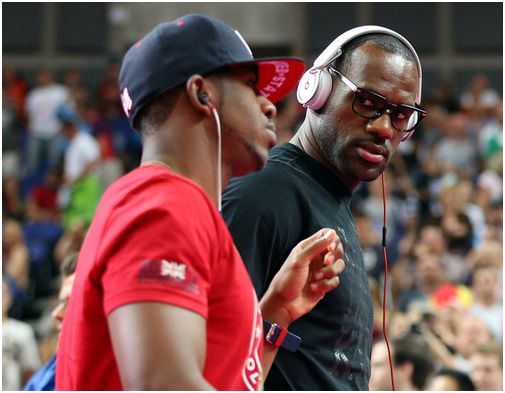 The days of shopping for Christmas presents on the desktop computer are disappearing and there has been a surge in mobile activity during the Christmas season. In December 2013 Mobile traffic accounted for 48 % of all online traffic, with a notable growth in Mobile sales accounting for 29 % of all online sales, up 40 % over 2012. Increasingly more and more consumers are now shopping on their mobile devices and turning to mobile to buy gifts.
The days of shopping for Christmas presents on the desktop computer are disappearing and there has been a surge in mobile activity during the Christmas season. In December 2013 Mobile traffic accounted for 48 % of all online traffic, with a notable growth in Mobile sales accounting for 29 % of all online sales, up 40 % over 2012. Increasingly more and more consumers are now shopping on their mobile devices and turning to mobile to buy gifts.
Last December Smartphones drove 28.5% of all online traffic compared to tablets at 18.1%, making it the browsing device of choice. And when it came to making the sale, tablets assorted 19.4% of all online sales, more than twice that of smartphones, which accounted for 9.3%. Whilst 25 % of shoppers said they had a preference for shopping in-store and 10 % of all shoppers plan to use their mobile devices to check retailer’s products or prices or read reviews, while they are already shopping
The multiple mobile devices being used by the consumer during the Christmas shopping journey means a multichannel shopping approach is advised for your mobile marketing strategy this Christmas season; For instance your customer orders online and then proceeds to click and collect in-store.
Below are some reasons why a mobile marketing strategy is essential this Christmas season:
Reach Extreme Last Minute Shoppers
Holiday gifting procrastinators
We have all been there, it’s 3.30 on Christmas Eve and you have yet to buy those Christmas gifts for loved ones, with the shopping shelves empty, and the wrapping paper scarce, you can’t help but panic. However with Mobile thrown into the equation panic mode can be sedated; and the rush to complete those purchases can somehow be more organised. Last-minute shopping is likely to be easier than ever; a later cut-off period for Christmas delivery together with click-and-collect options mean it’s easier for these last-minute shoppers to buy their presents online, 11% of shoppers in 2013 planned to leave their Christmas shopping until the last week. In the meantime, mobile-enabled consumers can compare prices, find nearby stores and with some retailers they can reserve stock while they are already shopping. Retailers need to cater to these mobile-enabled shoppers by rolling out options on their mobile website and/or mobile app to check stock availability and reserve products in nearby stores.
Build Wish Lists and Shopping Lists
Their making a list and checking it twice…
As a retailer through usage behavioral segmentation in your mobile app you can become more responsive and coming up to the Christmas shopping frenzy you can encourage users of your app to tag favorite products or build wish lists and shopping lists within your app. And based on these wish lists created by the user, coupons that relate back to your users wish lists can be digitally delivered to their mobile phones, and similarly through coupons to digital wallets mobile coupons can be updated in real time. And its Christmas Eve, the shelves are empty and they have not gotten around to ticking everybody off their list. Well now with digital wallet capabilities you can conveniently send gift cards directly to a loved one’s smartphone.
Also for the last minute shoppers who may have a wish list but may be waiting until the middle of December to buy presents in online “Christmas sales” per say or for the shoppers who may be waiting for stock to be made available again, a particular size or color etc. As a retailer this is an opportunity to encourage users to download your app and build a wish list of items they possibly intent to purchase before Christmas day.
Through behavioral segmentation users who have created a “wish list” would then be able to receive an alert through a push notification if any of the items were to go on sale and or become available again.
Dedicate a Line For In-Store Pick Ups
Because the likelihood of having a clear path to purchase is as likely as Santa Claus traveling faster than light…
And lastly it is no secret that Consumers come out in their droves during the Christmas season and the likelihood of having a clear path to purchase is as likely as Santa Claus traveling faster than light. Most of the time Christmas queues are unavoidable, with one quarter of shoppers having a preference to visit stores rather than buying online. On the other hand for consumers who decide to pre-order their Christmas gifts through Click and Collect you can help your customers to avoid the queues by having a dedicated line for in-store pick ups. iBeacon technology can also be deployed in a store to trigger alerts through push notifications to consumers when they arrive in store to direct them to their collection points.
The rapid increase in mobile shopping promises to be one of the defining characteristics of this Christmas for retailers, along with further growth of click-and-collect. Along with consumer confidence on the up, a strong retail trend is expected to continue this Christmas season. And what better way to embrace these trends than to carry out a mobile marketing strategy of your own and allow your brand to shine.
If you would like to hear more about how XtremePush can help you to reach your extreme Last Minute shoppers and much more – we would love to hear from you.
Afterall – tis the Season to have a Merry Mobile Christmas!!!










